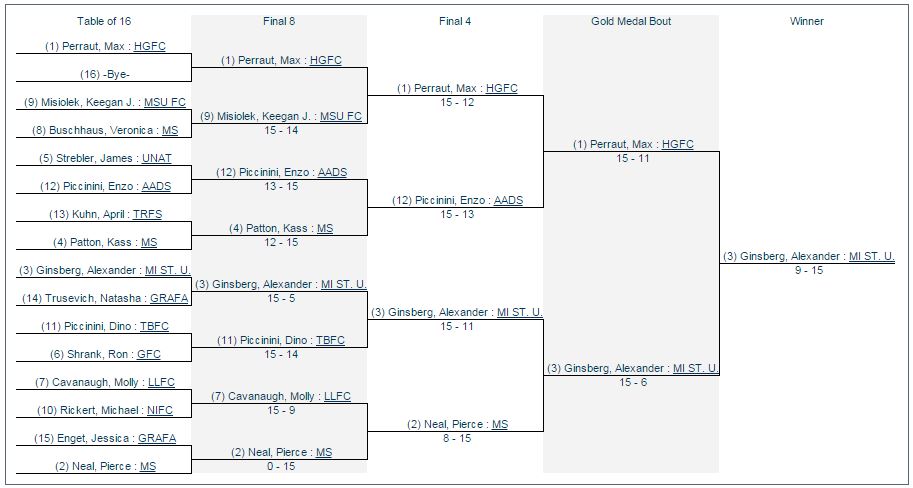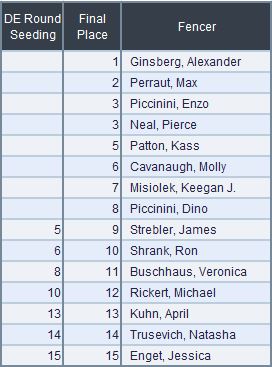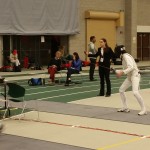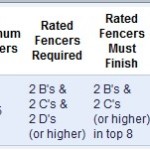The October and November 2015 Parent’s Corner discussed understanding pools and understanding DEs. There’s one final step – determining a fencer’s finishing placement after DEs. Most fencing competitions don’t do a full fence-off for every position, so once you lose a DE, you are eliminated. This means if the fencing competition had more than 8 competitors (but 16 or fewer), there will be a DE round of 16, the fencers who lose their DE in the round of 16 are out, and in the round of 8 another 4 will lose their DE and be out.
The final question becomes – if your fencer loses in the round of 16, how is their final position determined? The answer depends on two factors. The first factor is their seeding coming into the DE round. The second factor is how other fencers did relative to their original seeding.
The actual rule is very simple. All fencers who lost in a given round are ordered by their seeding going into the DEs, and this yields the final result. So the fencers that lose in the round of 16 will have a final position between 9 and 16, and where they end up is based on the original DE seeding of the other fencers that also lost in the round of 16.
Next we will walk through an example of tournament results from askFRED with 15 competitors (for information about askFRED, see the Oct 2014 Parent’s Corner). Below is the DE Tableau from the round of 16 for a tournament with 15 competitors:

The numbers next to each of their names are their seed going into the DEs (their seeding after pools, as we discussed in Nov 2015 Parent’s Corner).
To figure out the final placement for the fencers that lost in the round of 16, we sort them all by their DE seeding. Based on their seeding going into the DE round, fencers in the final places 9-15 with the following seeds lost in the round of 16 are ranked as follows: 5, 6, 8, 10, 13, 14, 15

As you can see above, since the fencer who was seeded fifth out of pools (Strebler) was the highest seeded fencer to lose in the round of 16, that fencer is the highest finisher in the round of 16, which is 9th place. The 6th seeded fencer out of pools (Shrank) also lost in the round of 16, so his final position is 10th. All of the fencers that lost in the round of 16 finish between 9th and 15th place, and are sorted by their pool seeding, and this is their final result.
It works the same for all DE rounds, with the following exception. If there’s no “fence-off for 3rd place” (which we do at RFC challenges, but most tournaments do not do), then the two fencers that lose in the round of 4 are both considered third place, and no 4th place is assigned, as shown in the example above.
DE seeding, which is driven by a fencer’s results out of pools, can directly influence their final result. Each touch and bout in pools is important, and a couple of extra touches in pools can improve your fencer’s final result position.



